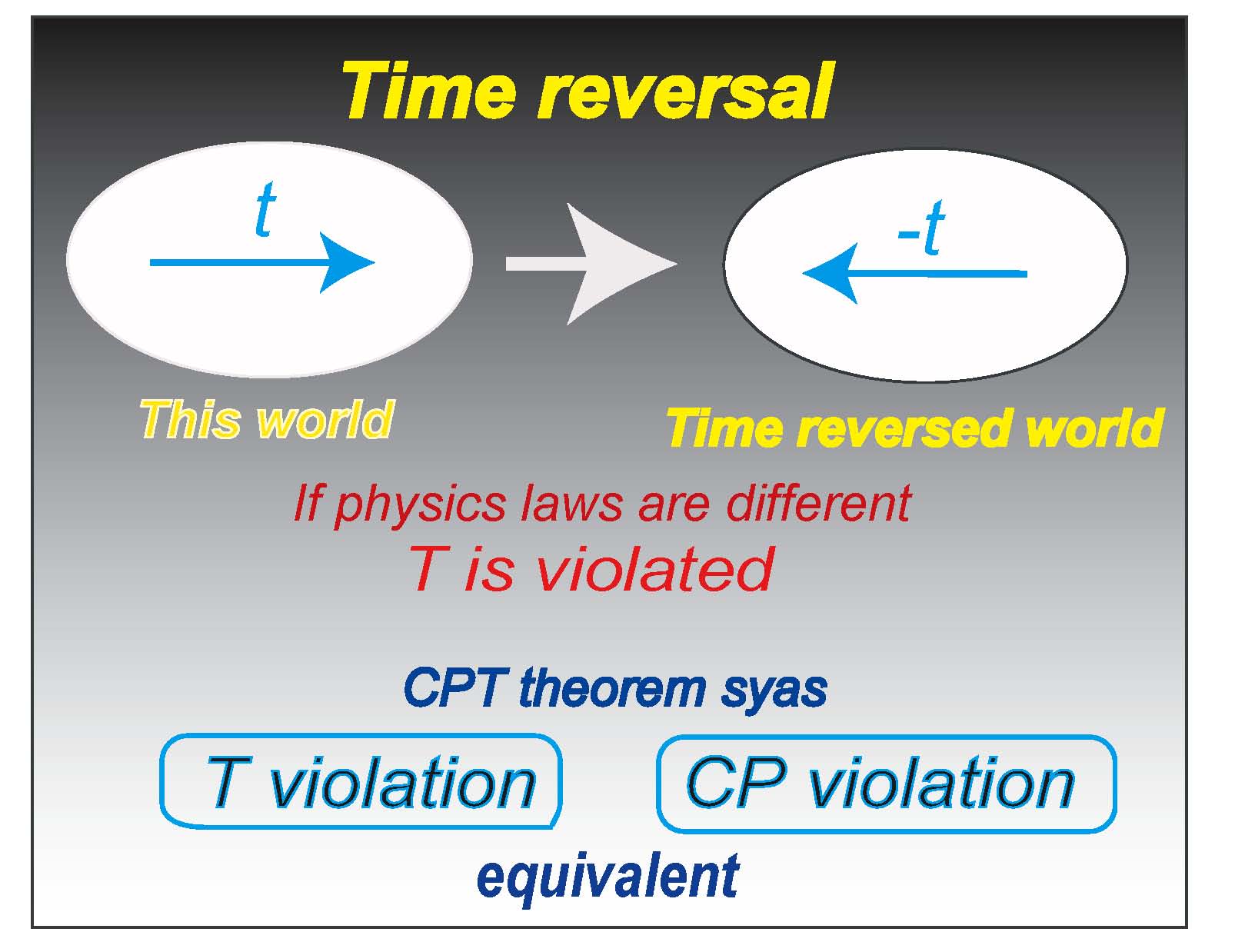T violation
T violation
|
Time reversal (T) symmetry has long been a subject of interest from pre-modern physics times,
since it implies the reversibility of motion - for instance,
an identical trajectory of an object when time runs back in classical mechanics.
In modern quantum field theories it has received renewed attention
as a discrete symmetry of space/time along with charge conjugation (C)
and parity reflection (P).
Although C and P are each maximally violated in weak interactions,
T (and CP) are almost exact symmetries in all the interactions including
the weak interaction. The violation of T,
which the TREK experiment searches for by means of muon transverse polarization
in the kaon decay, would have a great impact since it would mean that the physics laws
in the time-reversed world are different from ours.
T violation has also an important meaning in particle physics since
it is equivalent to CP violation according to the CPT theorem.
We can study the sources of CP violation which are necessary to explain
the baryon asymmetry in the universe.
|

|
CP violation and PT physics
In the Standard Model (SM), CP violation is induced by the complex phase of
the CKM quark mixing martix elements, and recent B-factory results of
the B → J/ψ K0S
decay clearly confirmed this theory. On the other hand, it is argued that
this CKM phase alone is not sufficient enought to explain the baryon asymmetry.
Today there are intensive studies underway at accelerator laboratories
searching for CP violation beyond the SM.
In addition to the direct search for new particles at high energy colliders,
there are also many precision measurements to search for small deviations
from the SM predictions.
In B meson decays e.g. the observationof a slight difference
between the CP asymmetry of the
B → J/ψ K0S
processand that of the penguin diagram processes might be a hint for new physics.
In the kaon sector, the CP violating
K0L → π0νν
rare decay study has been performed at KEK -E391a and this will also
be proposed at J-PARC as the KOTO experiment.
It is attempted to measure possible difference of theunitarity triangle
from that of the B physics, but it can only be achieved
with sufficient event statistics.
Considering the current situation of our understanding of CP violation,
the importance of a PT experiment,
which is highly sensitive to new physics as a deviation from null effects,
is increasing.
Other experimental T-violation studies
A brief overview of the other experimental studies of T violation are worth while
in order to make the position of PT experiment clear.
Besides PT, electric dipole moments (EDM)
of particles or atoms are regarded as the most sensitive
search for new physics at low energy. Intensive efforts over 6 decades
of experimentation have pushed the EDM limit steadily down.
The latest improved value of neutron EDM of
dn = 3.1 × 10-26e cm
is compared to the SM prediction of ∼ 10-31e cm.
EDMs of other elementary particles such as
the electron, muon, and neutrino are also being lowered.
Measurements of atomic EDM, for example Hg199
are being carried out with the present-day results being consistent with zero.
As for dn the next generation experiments
are now being prepared aiming at 10-28e cm.
We can anticipate further improvements in the EDM measurements,
constraining model parameter space and/or discovering new physics.
While the current experiment of PT also searches
for new physics, the parameter space spanned by these experiments are complementary
(as is discussed e.g. in multi-Higgs models).
The neutron and atomic EDMs are also related to
θQCD
with a different aspect from PT.
Several T-odd correlation experiments have been carried out at both low energies and higher energies.
Recent T-odd beta decay parameter measurements yielded
D = [-2.8 ± 6.4 (stat) ± 3.0 (syst)]× 10-4
for the neutron decay, and
R = (0.9 ± 2.2)× 10-3
for the 8Li decay. Also the recent
measurement of transverse e+ polarization
with T-odd character in polarized μ+
decay gives no T violation
PT2 = (3.7 ±7.7 ± 3.4) × 10-3.
They are all consistent with zero value with no hint of T violation.
The nuclear beta decay physics analysis is complicated by the large final state interactions,
and the nuclear-model dependence of the complex many-body nuclear wave functions.
